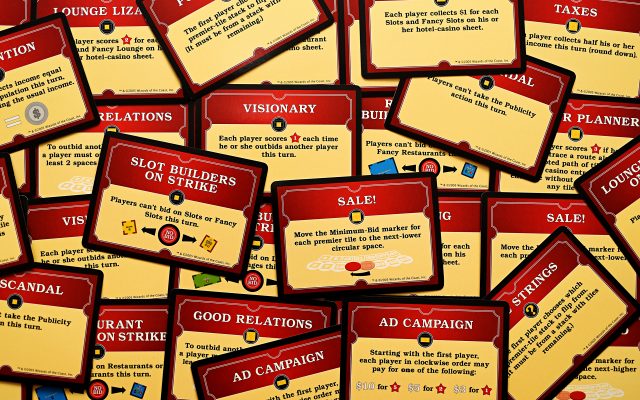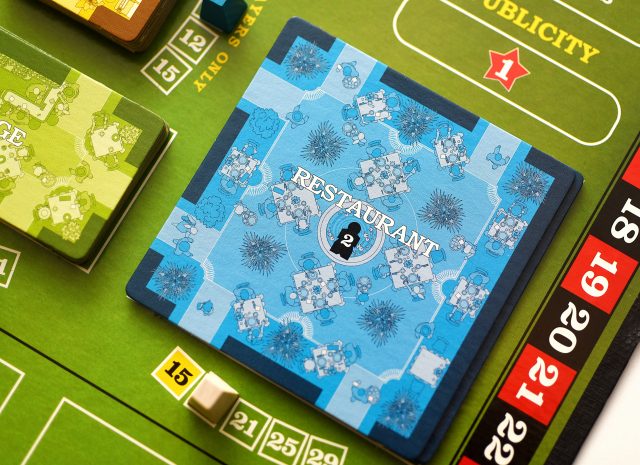The newest Cult of the Old comes with a bit of a history lesson, so strap in! Back in the ‘70s and ‘80s, the hobby game market was dominated by an American company called Avalon Hill; they even had their own magazine, the General, that published articles and scenarios about/for their games. I still have fond memories of playing a number of Avalon Hill games with my gaming friends from my high school days. As much as I enjoyed games like Kremlin, Titan, and Enemy in Sight, they are unlikely to show up in future Cult of the Old entries due to a) being long out of print, and b) being far more complicated than what most new gamers are looking for.

As Catan and other Eurogames began to capture the hearts and minds of North American gamers in the mid to late ‘90s, Avalon Hill’s popularity waned, and by the turn of the millennium, they had shut their doors. Around the same time that Catan was making waves in North America, the upstart company behind Magic: the Gathering* (MtG), Wizards of the Coast (WOTC) bought Dungeons & Dragons from TSR (TSR was to roleplaying games what Avalon Hill was to board games in ‘70s & ‘80s). WOTC was, in turn, bought by Hasbro.
One of the first moves made by Hasbro and their newly acquired WOTC division was to purchase the name of the now defunct Avalon Hill. There was a lot of speculation amongst hobbyist if this meant that Hasbro would be republishing Avalon Hill’s back catalogue of games, and if so, would they be changing them at all? People had their hearts set on updated versions of Titan or the holy grail for many gamers, Dune.
Well, no new reprints of old titles happened. Instead, Hasbro used the Avalon Hill name as an umbrella brand for all their more niche games. MtG and D&D stayed under the WOTC brand, Scrabble, Life, Monopoly, etc. stayed under the Hasbro name, but established Hasbro strategy titles like Risk, Axis & Allies, Diplomacy, and more now had the Avalon Hill logo plastered on their boxes. Hasbro also started publishing new games under the Avalon Hill umbrella as well.

That brings us to this Cult of the Old title: Vegas Showdown (VS). Released in 2005, and designed by Henry Stern, with art by David Hudnut, Scott Okumara, & Peter Whitley, VS was one of the first new games to come out under the Avalon Hill masthead. VS was also one of the first games that could be described as a hybrid of European and North American game styles. The theme of the game (casino moguls getting rich and famous by building the best casino) is very North American, as are the event cards that cause the action to change a little every round. The auction, and tile placement mechanics, however, are distinctly Euro in their application.

In VS, 3-5 players compete to buy the best casino elements, such as slot machines, steakhouses, nightclubs, and more, for as little money as they can arrange. Elements start with a minimum bid amount when they first go on offer, but the more rounds they stay on the auction block, the lower that minimum goes. It is an auction, however, so no matter what the minimum bid required, stiff competition from your opponents can drive you out of the market. Figuring out how to jack up the price for something you didn’t even want, and getting out before you wind up being the final bidder, is a key element to this game.
Acquiring the right casino parts isn’t enough, however. Players have a playmat that represents the floor plan to their hotel & casino complex. Tiles purchased at auction must be fit into the floor plan intelligently, with fame bonuses to the players with the best layout. Rearranging your floor plan is possible, but it takes a lot of time and effort, and you are better off building right the first time – if that’s possible. Making the buying and placing of casino elements more challenging is the tech tree. You can’t have fancy slots unless you already have standard slots, and you can’t have a nightclub without first having a lounge, etc. If you buy something you can’t yet build, you have to hold it in reserve and take time to renovate once you have built the prerequisite component.

The aforementioned event cards are used to determine which size of components fill the auction block each round, and they provide global events that can affect the outcome of the round. Certain elements may not be bid on, players may be given the opportunity to buy fame or basic casino elements (while supplies last), or the minimum required bids for things may go up or down, and more.
Now, 13 years after the game was originally released, it is back in a shiny new box.

So Who is this game for?
VS combines a number of different elements, so there are many different types of gamers it will appeal to. If you like tile placement games such as Carcassonne, Vikings, Qin, and so on, you will like the casino building element, with the puzzle of putting each piece in the best possible spot. The event cards add a hint of randomness and chaos that players might like or not, but their effect is not enough to make someone who loves the rest of the mechanics hate the game (and vice versa). The heart of the game is the auction for casino elements, and it can get seriously cutthroat, so to truly enjoy VS you and your opponents should be up for that style of play. It isn’t a “take that” game**, but it does have pretty much the maximum amount of screwage you can get out of a euro-style game without worker placement.
*Magic: the Gathering is the first and longest continuously published collectible card game, invented by Richard Garfield. It is responsible for not only the entire CCG genre, but arguably also the deck building genre as well.
**Take that games (usually card games) are games that allow (or outright encourage) players to screw with each other, by taking actions that directly cost their opponent something (actions, resources, etc).
Comments
No comments yet! Be the first!